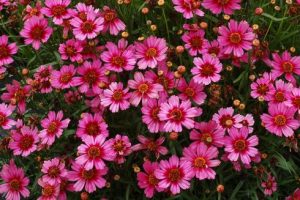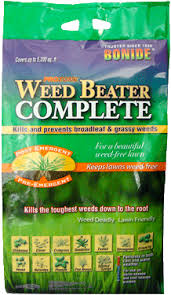 Summer brings Russian sage to center stage in local gardens. Sadly, it is so happy in mountain landscapes that this stunningly dramatic plant can get out of control or become difficult to maintain. That violet color also can seem overdone and overbearing in neighborhood after neighborhood. Don’t get me wrong, I love the easy care and bright look of Russian sage, but there are some new plants that are equally stunning and even less demanding.
Summer brings Russian sage to center stage in local gardens. Sadly, it is so happy in mountain landscapes that this stunningly dramatic plant can get out of control or become difficult to maintain. That violet color also can seem overdone and overbearing in neighborhood after neighborhood. Don’t get me wrong, I love the easy care and bright look of Russian sage, but there are some new plants that are equally stunning and even less demanding.
Garnet Coreopsis is one of those brand new perennials that are burgeoning after this week’s rain. Most coreopsis come in variations of yellow and orange, but ‘Garnet’ is the superstar of the coreopsis world. Rising above a compact, 10 inch mounding foliage its blossoms’ rosy-pink centers border on red, providing a dark contrast to the hot-pink outer petals. This variety can’t be beat for durability and bloom. It’s a drought tolerant, fast growing perennial with prolific bi-colored blooms that will brighten landscapes without demanding additional care. Could you ask for more from a flower that comes back with prolific bloom every summer? It is useful as a companion plant to sages, and with less maintenance.
~~ ~~ ~~ ~~ ~~ ~~ ~~
It’s the start of the rainy season and weeds have begun their summer migration into our yards. So, once again we reach for those trusty weed preventers. Unlike glyphosates such as ‘KleenUp’, ‘Roundup’, and ‘Weed Beater Ultra’, weed preventers keep seeds from ever emerging. Preventer products dramatically cut back on weeds without affecting the desired plants in a landscape. However, timing is everything when using weed preventers, as they must be applied before weeds start to grow.
 ‘Weed Beater Complete’ is one of those magic products that accomplish several laborious gardening tasks in one application. This unique product provides both pre-emergent and post-emergent control of both grassy and broadleaf weeds, and works amazingly well on native weeds. Administered through a hand spreader like any granular fertilizer, the systemic action is absorbed through the leaves and carried down to the roots where it inhibits cell division and disrupts photosynthesis. Amazingly, it also prevents future weed seeds from emerging! It definitely is a time saver if you have weeds already up in the landscape and want to dramatically reduce weeds that will come up later in the yard.
‘Weed Beater Complete’ is one of those magic products that accomplish several laborious gardening tasks in one application. This unique product provides both pre-emergent and post-emergent control of both grassy and broadleaf weeds, and works amazingly well on native weeds. Administered through a hand spreader like any granular fertilizer, the systemic action is absorbed through the leaves and carried down to the roots where it inhibits cell division and disrupts photosynthesis. Amazingly, it also prevents future weed seeds from emerging! It definitely is a time saver if you have weeds already up in the landscape and want to dramatically reduce weeds that will come up later in the yard.
The average yard will use about 2-3 bags of weed preventer. It’s the wise gardener that expends energy and money now to eliminate existing weeds and those that usually appear as the season progresses. You will be able to sit back and relax while thinking to yourself: “That Mountain Gardener’s advice is near genius, and I was utterly brilliant to follow it!”
~~ ~~ ~~ ~~ ~~ ~~ ~~
If your summer plants have not bloomed yet, or their growth seems slow and their colors pale, or if you just want bigger shade trees and healthier natives, this is the time for a summer feeding. Apply plant food in the landscape within the next 2-3 weeks. I fertilized my own landscape just as this week’s rain hit; talk about perfect timing!
Many gardeners ask me, “What do you use to feed your landscape, Ken?”
I use a special formula created just for our mountain landscapes, and, WOW, do plants love the taste! It was three years in the making, and I know because I developed it. Its cleverly appropriate name is ‘All Purpose Plant Food’ 7-4-4. This all-natural food is perfect on every plant in every yard. Lawns, trees, shrubs, flowers, container gardens, and roses thrive on it. “All Purpose” is specific to our region, easy to use, difficult to make a mistake with, and a must for all our summer bloomers to look their best.
Here are some bits of advice when using fertilizer, whether synthetic or all natural:
1) Don’t allow plant foods to remain on the foliage because those leaves can become spotted. Shake the leaves or hose off any excess that may settle on them.
2) After applying this summer meal to lawns and flowers, be sure to run the irrigation. Do not let granular foods remain in the hearts of agaves and yuccas, as this can cause serious damage to the plants.
3) The best placement of plant food is always at the outer edge of a plant’s drip line. If you’re not sure where to put your food, imagine that you are a tree, then fully extend your arms, and envision placing most of the plant food in the area from your elbow out to your fingertips. This comparable area under a plant is the location of most of the feeder roots, those fine root hairs designed to pick up food and water. It’s important to remember that roots directly under the trunk of a plant are unable to absorb plant food; they are there to hold up and support the plant.
With properly placed and thoroughly watered-in plant food, it won’t be long until our gardens are filled with blossoms!
~~ ~~ ~~ ~~ ~~ ~~ ~~
Gardening Class – Join us on Saturday to solve your local bug and weed problems, especially if you need face-to-face time rather than face-to-phone time. “Weeds & Bugs? No Problem!” is Saturday’s class topic. It focuses on how to solve some common gardening challenges. The class is free, is held in Watters’ greenhouse, and starts at 9:30 a.m., punctually.
With all the monsoon activity it is the perfect time to start or revive your lawn. On July 27 our class will be “Bringing Vibrant Green Lawns to Life”.
Until next week, I’ll see you in the garden center.
http://wattersgardencenter.com/2013/garnet-blooms-but-no-weeds-no-bugs/ Garnet Blooms but No Weeds, No Bugs
No comments:
Post a Comment